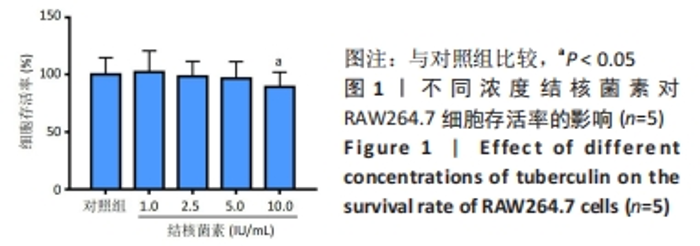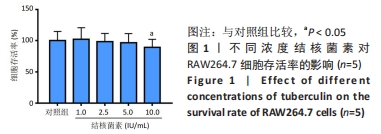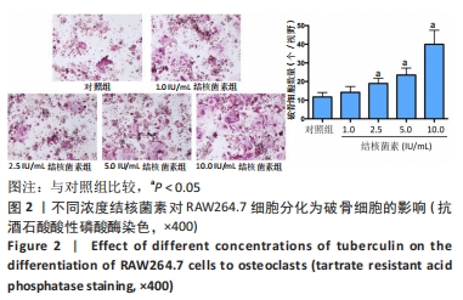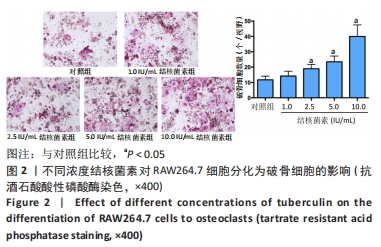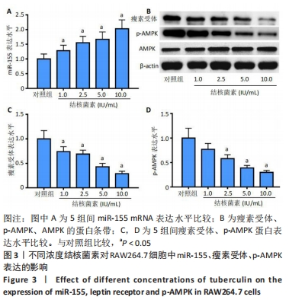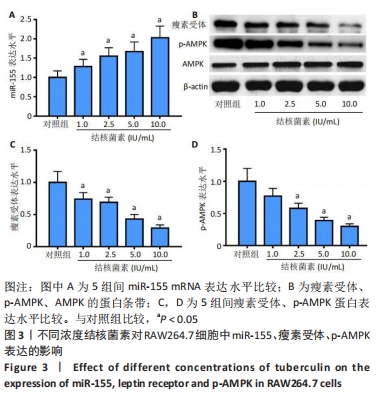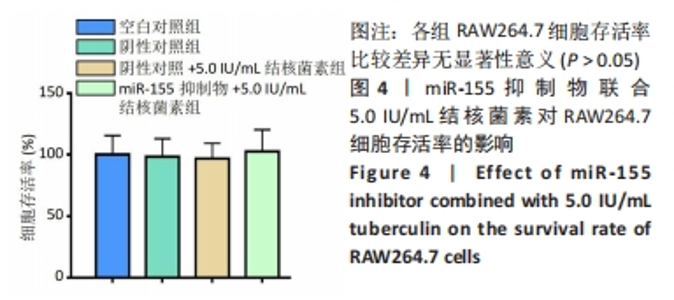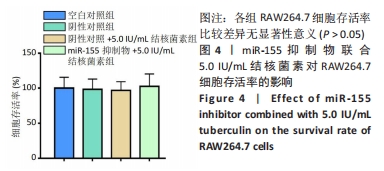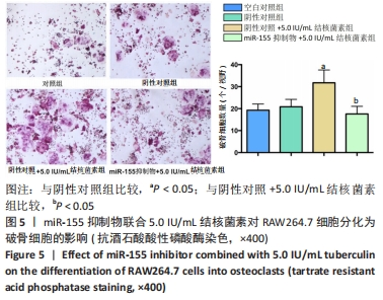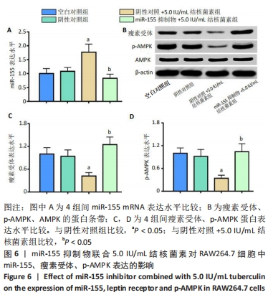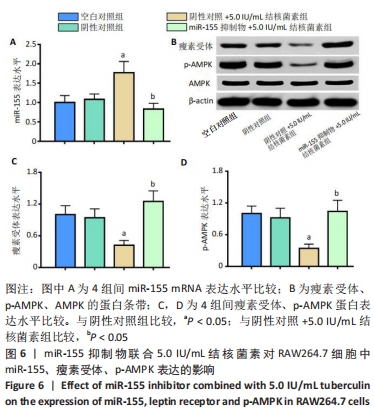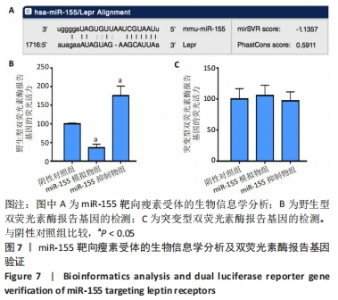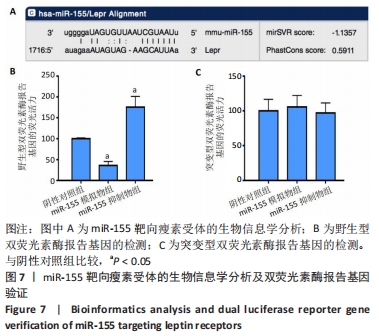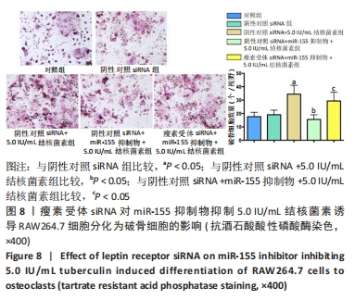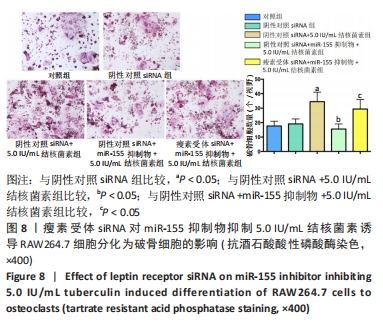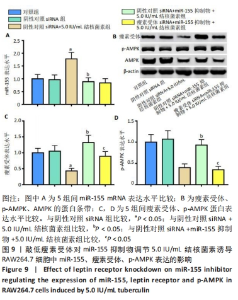[1] 梁思敏,马赫,潘希安,等. PPD诱导RAW264.7细胞分化为破骨细胞的实验研究[J].宁夏医科大学学报,2016,38(12):1352-1356.
[2] LIU ZZ, ZHANG CY, HUANG LL, et al. Elevated expression of lncRNA SNHG15 in spinal tuberculosis: preliminary results. Eur Rev Med Pharmacol Sci. 2019; 23(20):9017-9024.
[3] MAO Z, ZHU Y, HAO W, et al. MicroRNA-155 inhibition up-regulates LEPR to inhibit osteoclast activation and bone resorption via activation of AMPK in alendronate-treated osteoporotic mice. IUBMB Life. 2019;71(12):1916-1928.
[4] YANG C, SHI Z, HU J, et al. miRNA-155 expression and role in pathogenesis in spinal tuberculosis-induced intervertebral disc destruction. Exp Ther Med. 2019; 17(4):3239-3246.
[5] KHANNA K, SABHARWAL S. Spinal tuberculosis: a comprehensive review for the modern spine surgeon. Spine J. 2019;19(11):1858-1870.
[6] CHATTERJEE S, BANTA A. The spectrum of tuberculosis of the spine in pediatric age group: a review. Childs Nerv Syst. 2018;34(10):1937-1945.
[7] VAISHNAV B, SUTHAR N, SHAIKH S, et al. Clinical study of spinal tuberculosis presenting with neuro-deficits in Western India. Indian J Tuberc. 2019;66(1):81-86.
[8] LIU W, ZHOU J, NIU F, et al. Mycobacterium tuberculosis infection increases the number of osteoclasts and inhibits osteoclast apoptosis by regulating TNF-α-mediated osteoclast autophagy. Exp Ther Med. 2020;20(3):1889-1898.
[9] WANG XW, LIU JJ, WU QN, et al. The in vitro and in vivo effects of microRNA-133a on intervertebral disc destruction by targeting MMP9 in spinal tuberculosis. Life Sci. 2017;188:198-205.
[10] 梁思敏,马荣,马赫,等. TNF-α-shRNA 对结核菌素诱导破骨细胞形成的影响[J].中国脊柱脊髓杂志,2018,28(8):741-746.
[11] YANG Y, YUJIAO W, FANG W, et al. The roles of miRNA, lncRNA and circRNA in the development of osteoporosis. Biol Res. 2020;53(1):40.
[12] GAO Y, PATIL S, QIAN A. The Role of MicroRNAs in Bone Metabolism and Disease. Int J Mol Sci. 2020;21(17):6081.
[13] WEIVODA MM, LEE SK, MONROE DG. miRNAs in osteoclast biology. Bone. 2021; 143:115757.
[14] LEI Y, JUNXIN C, YONGCAN H, et al. Role of microRNAs in the crosstalk between osteosarcoma cells and the tumour microenvironment. J Bone Oncol. 2020;25: 100322.
[15] YOSHIKO Y, MINAMIZAKI T. Emerging roles of microRNAs as extracellular vesicle cargo secreted from osteoblasts. J Oral Biosci. 2020;62(3):228-234.
[16] YAN B, WANG L, LI J, et al. Effects of the multifunctional hormone leptin on orthodontic tooth movement in rats. Am J Transl Res. 2020;12(5):1976-1984.
[17] MAN GC, TAM EM, WONG YS, et al. Abnormal Osteoblastic Response to Leptin in Patients with Adolescent Idiopathic Scoliosis. Sci Rep. 2019;9(1):17128.
[18] 王正宇,朱云,杨小中,等.瘦素通过抑制PPARγ的表达抑制RAW264.7巨噬细胞向破骨细胞分化[J]. 细胞与分子免疫学杂志,2015,31(2):145-148.
[19] TONG X, GANTA RR, LIU Z. AMP-activated protein kinase (AMPK) regulates autophagy, inflammation and immunity and contributes to osteoclast differentiation and functionabs. Biol Cell. 2020;112(9):251-264.
[20] 陈苗苗,仝锡帅,郑嘉铭,等.氨基咪唑-4-甲酰胺核苷酸对破骨细胞自噬和分化的影响[J].畜牧兽医学报,2019,50(11):2339-2347. |
